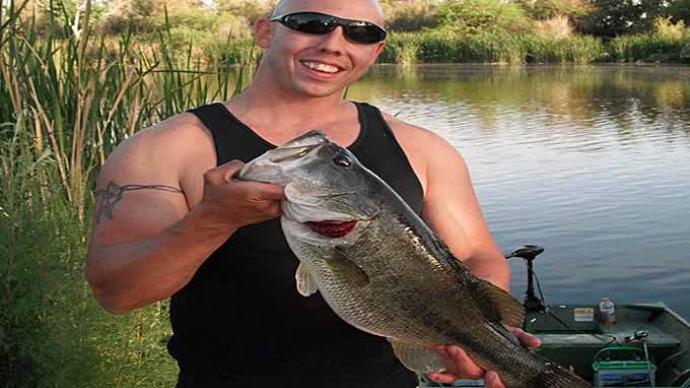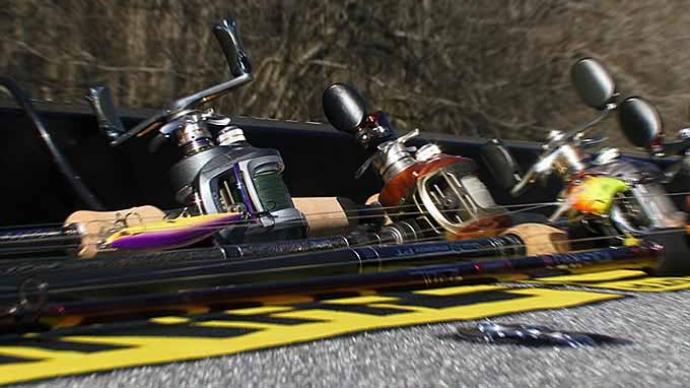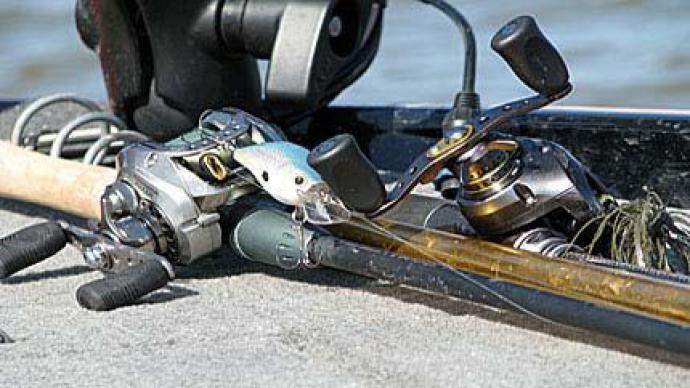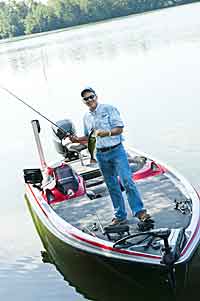
Combine a beautiful day on the lake with a box full of crankbaits, and the inevitable question is "Which one should I throw?" When it comes to crankbait selection, it's important to pay attention to water temperature and clarity, the depth and position of the bass, and their mood.
Water temperature and clarity are easily determined through simple measurement and observation. But the other factors require some educated guessing (and testing) because knowing the bass's depth, position, and mood will assist the angler in selecting the size, sound, action, and color of the appropriate crankbait.
For example; if I'm fishing in cold water, I know the bass will respond best to a crankbait with a tight wiggling action. A tight side-to-side movement imitates the energy-saving movement of baitfish in a cold environment.

But if the water is warm, the bass tend to be more aggressive, (as is their supper). A better choice is a wide wobbling crankbait that displaces a lot of water; like the Sebile ACAST Minnow.
Remember; cold water = tight wiggle, warm water = wide wobble.
It seems logical to match a crankbait's "running depth" to the "holding depth" of the bass. So if bass are positioned near the bottom in 10 feet of water, most weekend anglers tend to pick out a crankbait that runs at 8 to 10 feet. While it seems reasonable to retrieve the bait at the fish's eye level, I prefer to select a crankbait that runs deeper. Here's why.
I don't want a crankbait that just barely reaches the bass. I'm after active bass. So I dig out a deeper diving crankbait that will eat up the bottom. I want to trigger a reaction strike with a mud-churning, stump-deflecting, rock-bouncing crankbait that is hard to ignore.
Occasionally there are exceptions to this approach. If the fish prove to be extremely finicky, an angler may want to cast a crankbait that runs right at the bass's holding depth, without digging up the bottom. Spooky fish can be scared away by crankbaits that are too aggressive or noisy.
Whether you choose to dig up the bottom or not, will depend on the mood of the fish. Determine the activity level of the bass, and crankbait selection becomes easier.
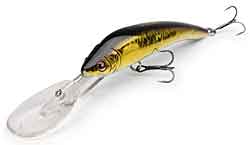
So far we've been talking about fishing crankbaits in relatively shallow water, but if the bass are deep, then naturally an angler will want to select a deep-running crankbait, like the Sebile Ultra-Deep Koolie Minnow, that goes to 20 feet or so. This typically results in throwing a large crankbait on light line.
Line diameter has a big impact on a crankbait's running depth. The smaller diameter of the lighter line creates less water resistance and allows the crankbait to dive deeper. Heavy line is wider in diameter and creates more water resistance which causes the crankbait to rise up.
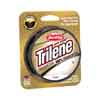
The proper line choice is always important. I use Berkley 100% Fluorocarbon for deep cranking because it is a fast sinking line due to its higher density. But when I'm shallow cranking, I use Berkley Trilene XL which can stand up to the abuse that bottom bouncing produces.

Always be willing to experiment, but recognize that "depth" is a major key in crankbait selection.
Unfortunately, an angler may own a crankbait that will reach the target depth, and still struggle to catch bass unless the proper speed and correct retrieve are discovered and applied. Today, a super slow, start-stop retrieve may be the ticket. Tomorrow, the only hits may result from a super fast and steady retrieve.
A small adjustment in speed or retrieval technique can greatly impact the number of fish brought to the boat.
When bass are finicky, they are not only impacted by a crankbait's retrieve, but by its size. This is especially true for bass in lakes that get a lot of fishing pressure.
On a tough day, you may have to throw a smaller crankbait to promote a strike. However, it can be hard to purchase a smaller crankbait with a tight wiggle that will run 16-18 feet on its own. In those situations, anglers may need to attach lead weights to suspending baits to get them to reach deeper depths.
Crankbaits come in an endless variety of colors, complicating the selection process. I simplify color selection by matching it to the color of the water. If the water is dark, begin with a dark bait. If the water is real clear, select a transparent color or natural color pattern that imitated the local bait.
If the bass are eating sunfish, shad, or crawfish; match the local food supply. I tend to fish a lot of lakes that contain Blue Back Herring, and when the water is clear I want to throw a crankbait that imitates that specific color pattern. The key is to let the water clarity help you in selecting the color of your crankbait.
Crankbaits can be quiet, or noisy. Selecting a crankbait with or without rattles will again depend on the mood of the fish. If the bass are aggressive, by all means use rattles. Hearing the bait before seeing it, can allow a hunting bass in heavy cover to become aware of the crankbait's presence much earlier. And this allows the bass the extra time to target a potential meal before the prey escapes.
If the fish are finicky, or spooky, a quieter approach may be less intimidating and make the potential meal more appealing.
One important and final note: Selecting the perfect crankbait is pointless if you are not fishing it properly, especially when current is present.
Whether the water movement in your lake is generated by a dam pulling water, or by the wind, always face into the current. Why? Because the bass are always pointed into the current. This nose-forward positioning allows them to use less energy to maintain their place, and increases their chances of ambushing any food that the current tends to bring toward them.
Too often beginning anglers cast downwind because it is easier, but then the crankbait is retrieved in the opposite direction of the current. Always retrieve your crankbait with the current.
If an angler will keep these crankbait selection guidelines in mind, I'm positive it will take some of the mystery and frustration out of the process. But remember; an angler can select a crankbait with the right action, running depth, color, size, etc.., and still not catch bass if they ignore how to position themselves with respect to the wind and current.
For more articles, quick tips and much more visit HankParker.com.


